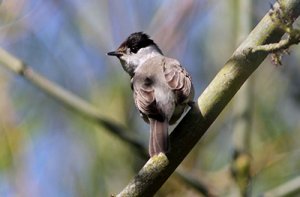What a difference a year makes
There were large numbers of Blackcaps in gardens this time last year.
A couple of weeks ago we released the Garden BirdWatch 2013 annual results, and they tell a very different story to what is currently happening in our gardens at the moment.
In 2013, we saw unprecedented numbers of birds in our gardens, driven there either by the lack of food in the countryside, the cold weather, or both. However, this year we have had very mild weather, there is still food in the countryside and spring came early.
Take the Blackcap for example. There were a large number of birds in gardens in the early part of 2013 anyway, but come April, this number increased even more to the highest average number seen in gardens in a decade, potentially driven by migrants coming to England and meeting the bad weather. In 2013, 16.5% of GBW gardens reported seeing Blackcaps between January and March, but this year that number has dropped to around 12%. Reed Buntings also had some of their highest average numbers for a decade in early 2013, with 4.4% of gardens reporting them, compared to just 3.5% this year.
Some of the most dramatic differences between this year and last are found in the species that rely on a good crop of seeds in the autumn. Jay, Coal Tit and Siskin were all depending on our gardens this time last year, but are now back to normal numbers thanks to the fact that there was plenty of natural foods around this year.
All of this just goes to show how birds use our gardens as and when they need. This time last year, our gardens were teeming with birds taking refuge from the cold weather and lack of food. This year, we finally have our birds back but it was a pretty boring few months for Garden BirdWatchers.
Click here if you'd like to see our results in more detail.







Share this page